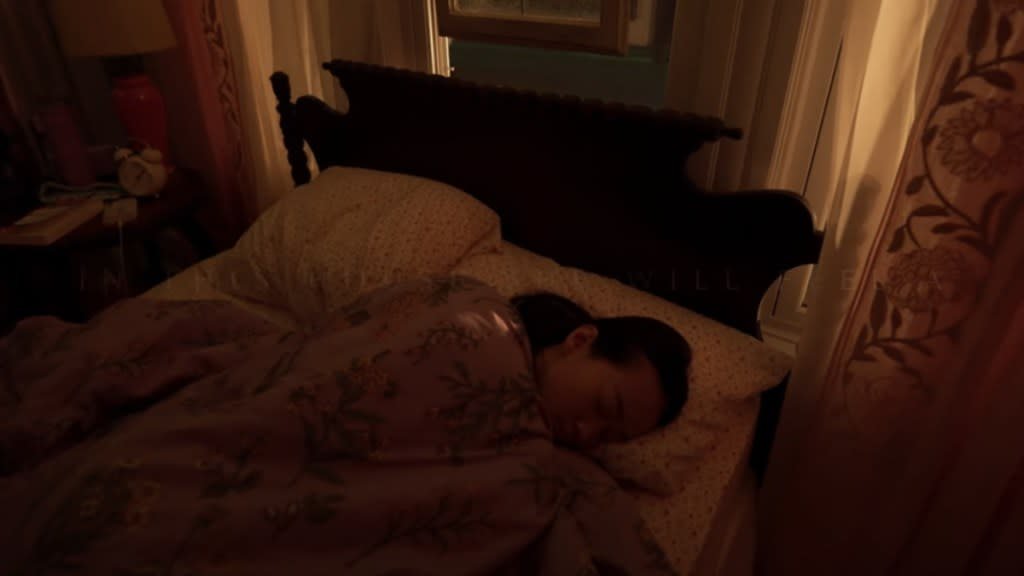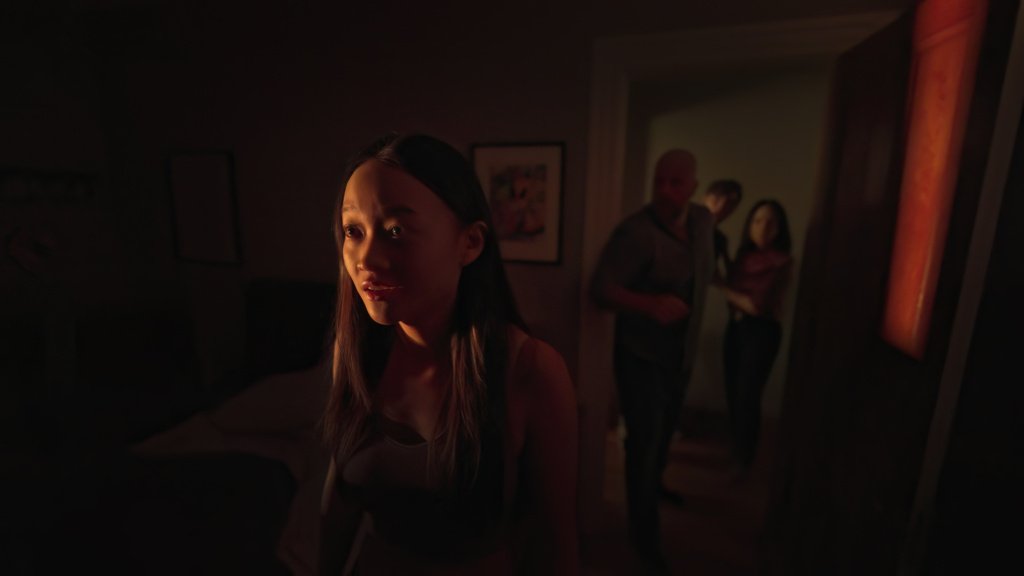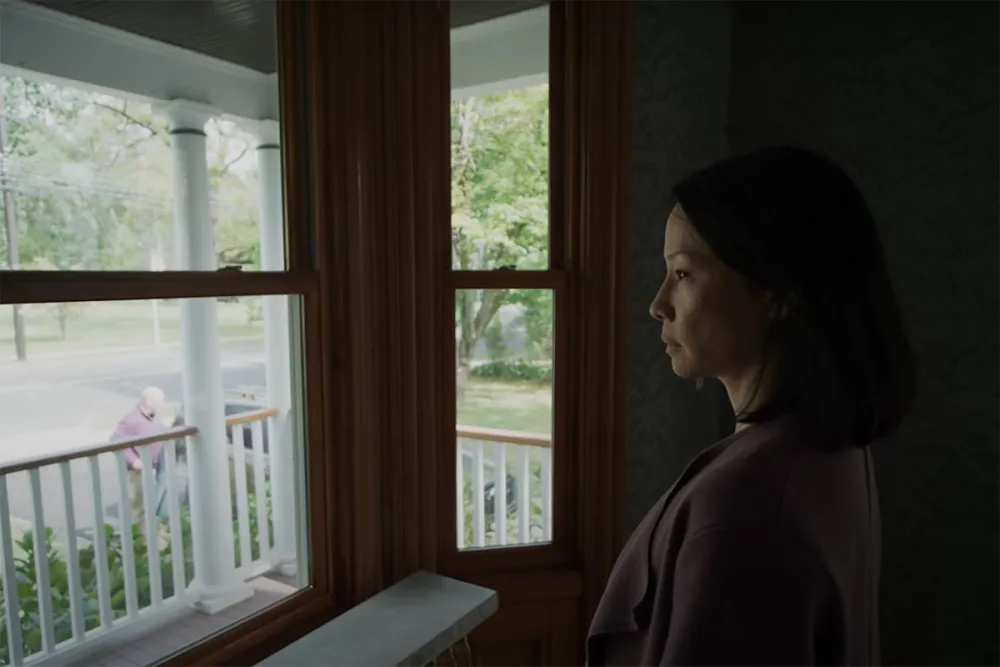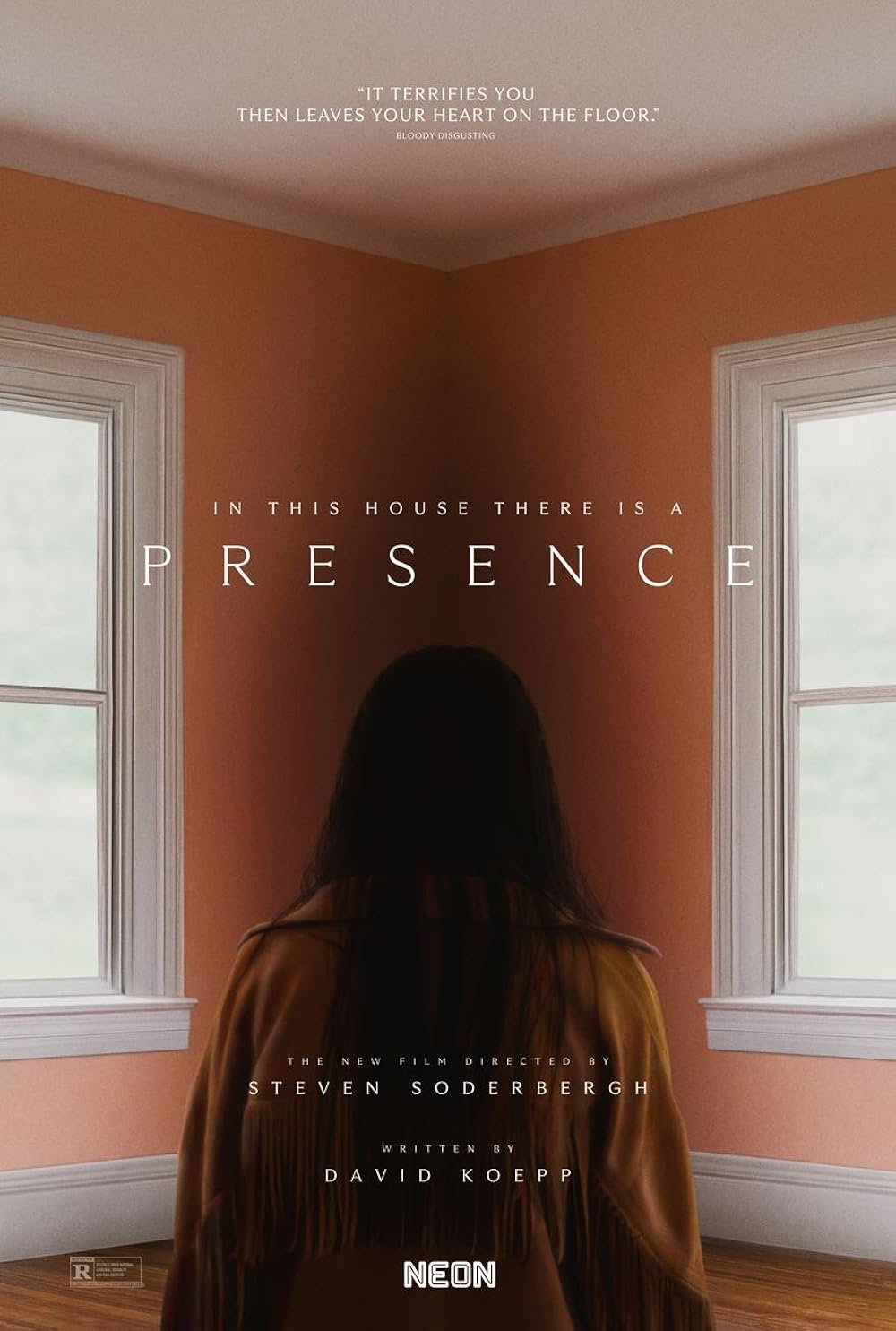Presence: A Haunting Family Drama
Genre: Horror, Drama, Thriller
Directed by: Steven Soderbergh
Starring: Lucy Liu, Callina Liang, Chris Sullivan, Eddy Maday
Release Date: 1/24/2025
Platform: Theater
Rating: 4/5
By Stephen Lackey
“The movie is more of an experiment or an art piece than a traditional film.”
While Ari Aster and Robert Eggers may be the trendy experimental arthouse filmmakers of the moment, quietly in the background director Steven Soderbergh remains one of the most interesting experimental filmmakers working today. He has helmed plenty of big-budget Hollywood films including the Ocean’s movies, Erin Brockovich, and award winners like Traffic. Soderbergh’s filmography also boasts a wealth of bold, unconventional works from the iPhone-shot psychological thriller Unsane to an unexpected crime drama with Bubble. With a career full of surprises, Soderbergh continues to blur the lines between mainstream and avant-garde filmmaking.

Soderbergh’s latest experiment is a family drama set in a haunted house called PRESENCE. The marketing for PRESENCE is completely misleading, selling it as a horror movie. On top of the unique genre flex the entire movie is shot through the eyes of a presence in the house. Yes, the film has thriller elements, but they only work built on top of a foundation of family drama. The story reveals pieces in vignettes as the presence seemingly floats from room to room. These vignettes can often feel a bit like videogame cut scenes but the matter-of-fact discovery of the story works for the most part.
PRESENCE is told through long single shots with no cuts. This approach makes sense as we are voyeuristically observing along with the presence via a first-person perspective. The entirety of the movie happens in the house, making it an almost traditional chamber piece. All of these storytelling limitations lead to some odd but necessary filmmaking decisions. The movie is often blocked in awkward, unrealistic ways, making it possible for the camera to float around the room and catch the faces of the characters as they deliver dialogue. While these situations do lead to noticeable weirdness they are fair concessions for such a fascinating journey.

The drama isn’t deep, but the characters are realistic, not super good, not horribly bad, and relatable. PRESENCE is not a film concerned with giving up answers or finality for every story element. Real family dramas don’t always wrap up in a given amount of time and that is the case here. This movie is about the vibes and these moments in time. On that level, the movie is more of an experiment or an art piece than a traditional film, and it succeeds in what it tries to do. The third act does deliver, it goes much harder than the first two acts lead us to expect.
Soderbergh shot the movie himself using a $5K prosumer camera with consultation from a cinematographer. It makes sense that Soderbergh shot the movie because it’s the best way he could direct the character of the presence. In a pretty amazing turn, Soderbergh gives the presence emotional weight in the film and connection with the other characters while never uttering a word.

PRESENCE does a lot with a little, a little budget, few characters, and a single location. The movie isn’t perfect. The limitations not only cause blocking issues but often the camera doesn’t get close enough to characters for the audience to get nuance from the performances. All that aside, if you get with the vibes of the movie you’ll have a great time and it will pay off in an exciting and shocking third act.



